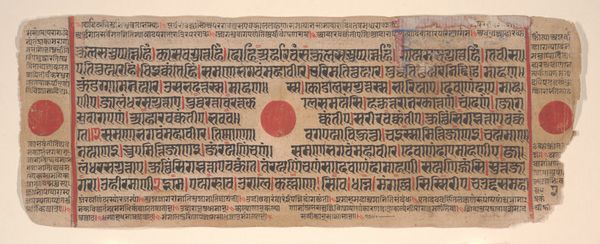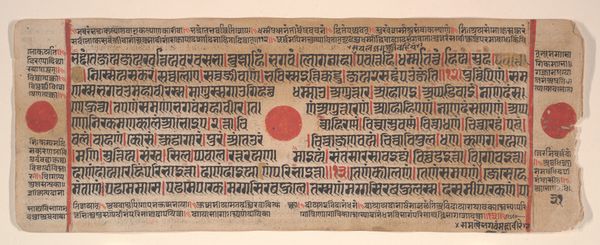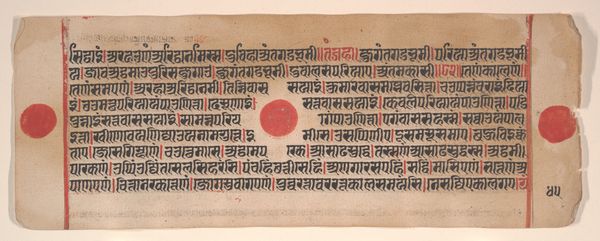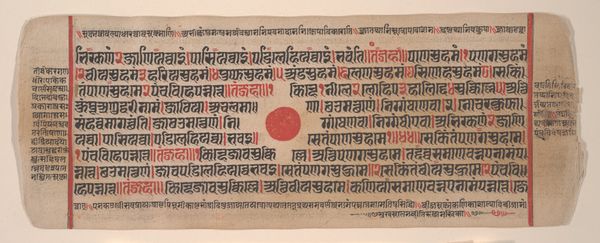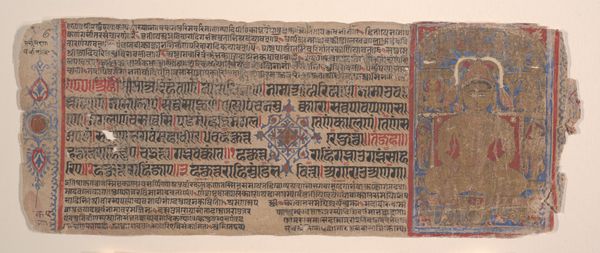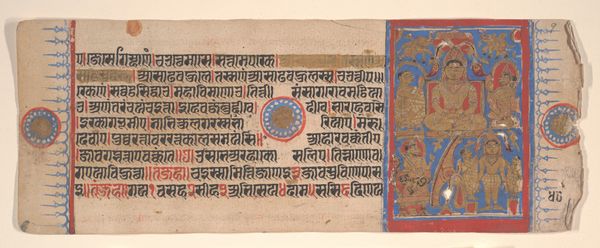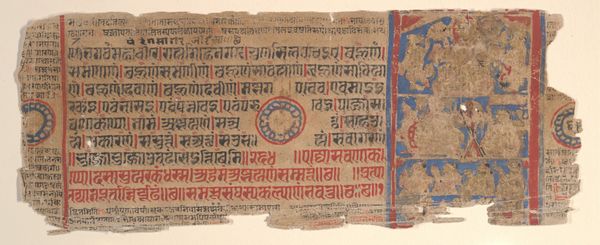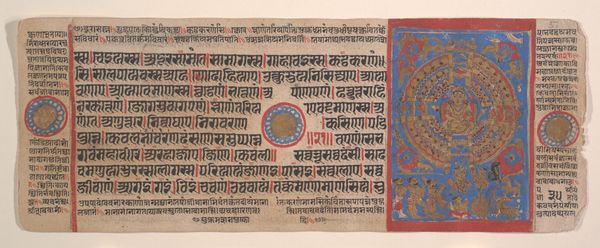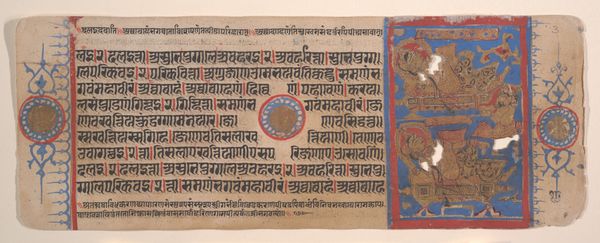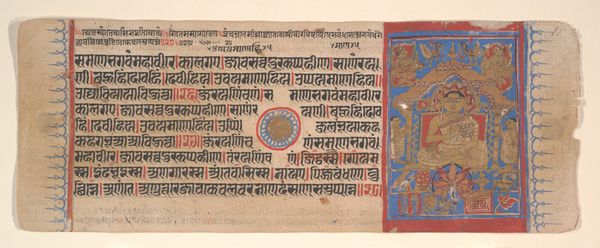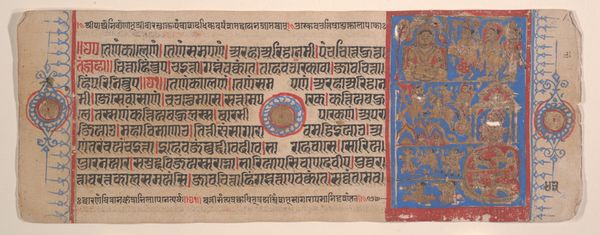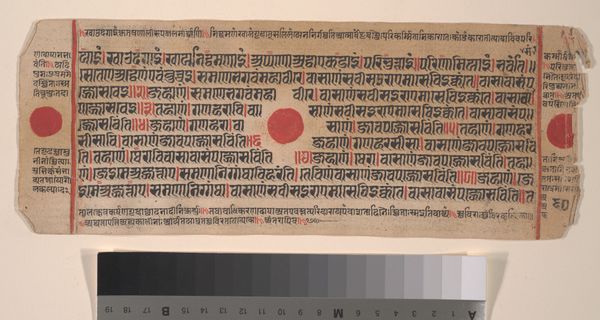
Leaf from a Kalpa Sutra (Jain Book of Rituals) 15th century
0:00
0:00
paper, watercolor, ink
#
water colours
#
ink paper printed
#
asian-art
#
paper
#
watercolor
#
ink
#
watercolour illustration
#
miniature
#
watercolor
Dimensions: (Average size .1–.71): 4 1/2 x 11 3/8 in. (11.4 x 28.9 cm)
Copyright: Public Domain
Curator: This leaf from a 15th-century Kalpa Sutra, currently residing in the Metropolitan Museum, is a fascinating object. Seeing these Jain rituals illustrated in ink and watercolor on paper offers so much to unpack. What strikes you most about it? Editor: I’m really drawn to the dense, almost overwhelming, text interspersed with those simple red circles. The contrast is quite stark. I am wondering what the presence of so much text communicates in relation to those few dots? Curator: The text is paramount; this is a religious manuscript, after all. But you're right, the red circles, known as *bindus*, serve a critical function. In the context of manuscript illumination from Western India during that period, it is interesting that we note that the use of a strong, bold red was commonly used as a device in this socio-historical context. This choice probably points us to the historical context, highlighting significant breaks or divisions within the text, guiding the reader through complex narratives. Why do you think standardization became a key part of Jain manuscript? Editor: Perhaps, the act of standardizing these illustrations was crucial to maintain doctrinal purity and to assure patrons of consistent quality? Curator: Precisely. The patronage of merchants and the burgeoning book trade influenced artistic production significantly. Now, consider the role of institutions like the Met in shaping our understanding of this object. The way the museum displays and interprets this artwork undoubtedly affects its meaning and value. What might be lost in the transition from a sacred object to a museum display? Editor: Maybe the original, personal connection that the user has would get lost or replaced, because the new encounter is filtered through museum protocols and scholarly interpretations instead of directly through religious practice. That is helpful. Thanks for guiding me to examine how institutions and society together have influenced artistic value. Curator: Absolutely, by thinking critically about context and presentation, we move towards a more nuanced and profound understanding.
Comments
No comments
Be the first to comment and join the conversation on the ultimate creative platform.
